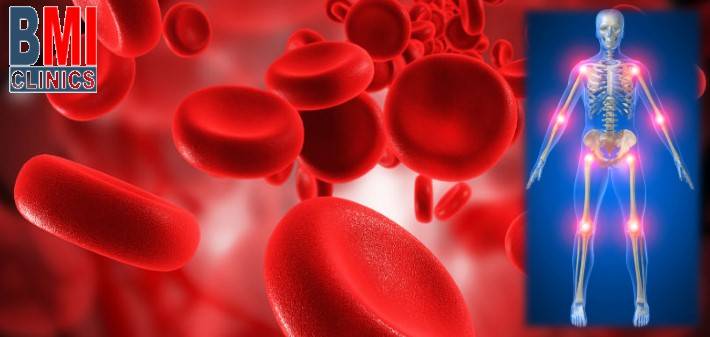Platelet rich plasma also called PRP therapy has been in the news recently with the publicized cases of football and baseball players undergoing the treatment. Other notable sports figures such as Tiger Woods and Rafael Nadal have also received the treatment for other problems such as sprained knees and chronic tendon injuries. Such cases, in the past, was treated by surgery. Some athletes have even gone ahead to credit this treatment and that leaves us with the following question.
What is Platelet rich plasma – PRP therapy?
This is an emerging alternative treatment method for common musculoskeletal tendon injuries. Most of us are aware that blood is composed of liquid called plasma and it contains small solid components, which are the white blood cells, the red blood cells and the platelets. Platelets are recognised for their ability to cause blood clotting, hence helping a wound to heal. What most of us are not aware, is the fact that platelets also contain hundreds of proteins called growth factors, which are very critical in the healing of injuries.
Therefore, PRP is plasma with more platelets than the one usually found in blood. The concentration of platelets in this case is mostly between 5 to 10 times greater than the normal serum. In order to develop a PRP preparation, blood is first drawn from the patient, and then platelets are separated from the blood cells. After that, the concentration of the platelets is increased in a process called centrifugation. What follows is that the increased concentration of platelets is combined with the remaining blood.
How Platelet Rich Plasma or PRP therapy works
Platelets contain different structures such as lysosomes, glycogen alpha and beta granules. The main constituent of PRP is the alpha granules, which often house the growth factors essential for healing. When the injected platelets are activated, the growth factors are released, triggering and amplifying the healing flow. Apart from the growth hormone, we also have other proteins in PRP such as vitronectin, fibrin and fibronectin, all of which play an important role as cell adhesion molecules. Platelets also have dense granules, which contain ADP, calcium, and serotonin, which promotes platelets segregation. The activated growth factors are then transported to the cell membrane for cellular export and paracrine signaling. The growth factors are bound to the surface receptors on the plasma membrane of their target cells. What follows is that the growth factor receptor complex signals for internal cellular proteins to activate specific gene sequences, which allow certain functions such as cellular reproduction, ostereoid production and collagen synthesis.
How is it done?
PRP can be injected directly into the injured area. A good example is in Achilles tendonitis which is a condition mainly seen among runners and tennis players. The heel cord can become inflamed, swollen and really painful. A mixture of PRP and a local anesthetic is injected into the inflamed tissue and what follows is pain at the point of injection for the next few weeks. This pain might increase for the first one or two weeks before you start realizing the treatments benefits.
This treatment can also be used to improve healing after surgery for some injuries. A good example is an athlete with a completely torn heel cord. Such an athlete may need surgery to repair the torn tendon. Healing of the tendon can be improved by treating the injured area with PRP during surgery. This is often done in a unique way that will allow the PRP to be stitched into the torn tissues.
Conditions treated with Platelet Rich Plasma or PRP
Research is yet to be conclusive on the effectiveness of this treatment but some of the notable injuries that have benefited from the therapy in the past include:
- Chronic Tendon Injuries
- Fractures
- Knee arthritis
- Acute ligament and muscle injuries
How safe is it?
Given the fact that Platelet Rich Plasma or PRP therapy uses autologous blood, there are low chances of immunogenic reactions and disease transfer.
Conclusion
Platelet Rich Plasma or PRP therapy holds a great promise for the future. The success of the PRP therapy is still under evaluation, and many researches are conducted currently. Fortunately, the risk associated with it remains minimal. The only shortcoming is the increased pain at the point of injection.









